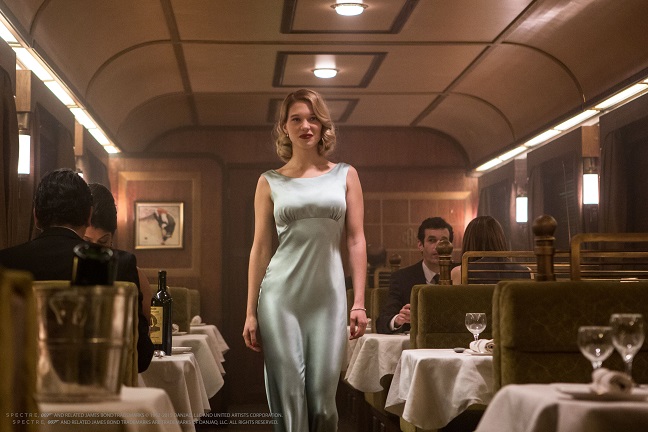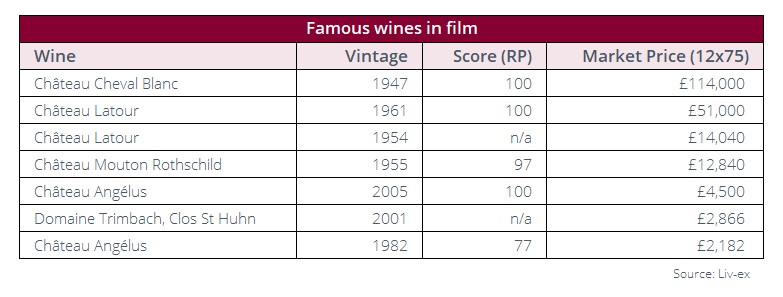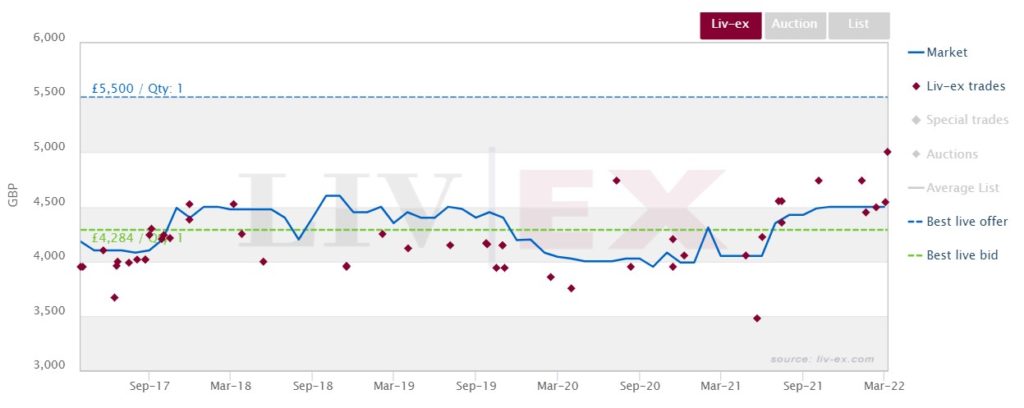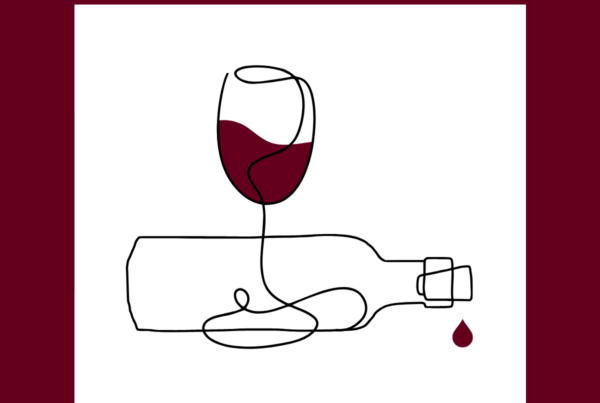- Brad Pitt’s Champagne has been announced as a sponsor of this year’s Academy Awards.
- Great vintages of Bordeaux and Champagne are among the most easily identified wines with ‘starring’ roles in many films.
- Two of Bordeaux’s most famous wines, both with 100-points from Robert Parker appeared in the same film – and are still in their drinking windows.
A press release this week announced that Fleur du Miraval Champagne would be an official partner of the Academy Awards on 27th March.
The Champagne is a collaboration between Brad Pitt, the Perrin family that manages his Miraval estate in Provence and the Péters family based in Mesnil-sur-Oger.
It is probably the first time that a drinks sponsor of the awards has been owned by an attending member of Hollywood’s upper crust. But it is very much not the only link between fine wine and the world of motion pictures.
The world of Bond and Bordeaux, Poirot and Petrus

Wines, beers and spirits have made regular appearances in film since the medium first began.
Although the brands that appear in many films are purely incidental to the plot, in others the choice of wine is deliberately meant to convey something about the character drinking it or may even be at the heart of the story.
The most obvious examples of this are the films and franchises that revolve around the worlds of super sleuths and spies, evil villains and cannibal aesthetes.
In a near fantasy setting, where money is no object, characters are free to indulge in whichever of the world’s greatest wines the scriptwriter chooses.
Bordeaux and Champagne in particular have seen regular screen time from the Bond franchise to Ratatouille (which has very sophisticated tastes for a children’s film).
Bond’s wine conquests are too numerous to list in full but include Dom Pérignon 1953 (Goldfinger), Château Mouton Rothschild 1955 (Diamonds are Forever) and Château Angélus 1982 (Casino Royale) and 2005 (Spectre).
You may also have missed the Château Latour 1961 and Château Cheval Blanc 1947 in Ratatouille, or Hercule Poirot’s drugged bottle of Petrus in the 1978 version of Death on the Nile (Château Malartic-Lagravière appears in this year’s remake).
A bottle of Château Latour 1954 has a blink-and-you’ll-miss-it appearance in Apocalypse Now, while Domaine Trimbach’s 2001 vintage of Clos Sainte Huhn was served up by the ever sophisticated Hannibal Lector in Hannibal. His pairing with human brains might not be to everyone’s taste however.
Best performer in a lead role
 As might be expected, these wines have all risen in value considerably since they were originally released.
As might be expected, these wines have all risen in value considerably since they were originally released.
Some of these wines are also now so rare that tracking them reliably is close to impossible. However, this is not the case with others.
The two wines from Ratatouille, Cheval Blanc 1947 and Latour 1961 currently top the list as two of the more expensive wines to feature in a film. It is perhaps no surprise given their fame, rarity and expense that their movie cameos had to be animated rather than live.
They also both carry 100-point scores from Robert Parker (Wine Advocate). In 1998 he called the Cheval Blanc ‘remarkably fresh, phenomenally concentrated’. And his drinking window went all the way up to… 2022.
Meanwhile, in 2000 the Latour still showed ‘exquisite purity and concentration’ and he placed a drinking window on it up to 2025 – still time to drink up therefore.
Interestingly, Hannibal Lector’s Clos St Huhn 2001 is more expensive than Bond’s Angélus 1982. The latter also has a rather disappointing score from Parker; just 77.
Despite hailing from one of Bordeaux’s great vintages and the one Parker admired, in 1995 he wrote that the Angélus had ‘deteriorated quickly’. He added it was ‘diffuse ad flabby’ and ‘clearly in decline’.
A 2002 tasting note from Jancis Robinson MW gave a more generous score of 17 but its drinking window only ran to 2010.
The 2005 vintage of Angélus has fared rather better. Rated 100-points by Parker (‘truly great stuff’) it also has an active secondary market (see chart below).
 Liv-ex analysis is drawn from the world’s most comprehensive database of fine wine prices. The data reflects the real time activity of Liv-ex’s 560+ merchant members from across the globe. Together they represent the largest pool of liquidity in the world – currently £100m of bids and offers across 16,000 wines. Independent data, direct from the market.
Liv-ex analysis is drawn from the world’s most comprehensive database of fine wine prices. The data reflects the real time activity of Liv-ex’s 560+ merchant members from across the globe. Together they represent the largest pool of liquidity in the world – currently £100m of bids and offers across 16,000 wines. Independent data, direct from the market.
Not a member of Liv-ex? Request a demo to see the exchange and a member of our team will be in touch with you shortly.



